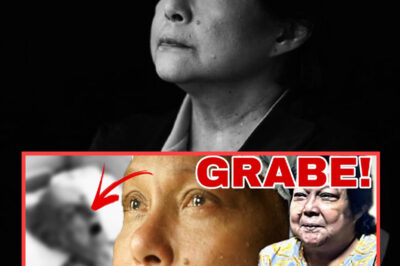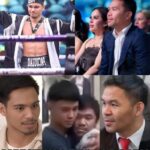Kobe Paras once stood as one of the brightest hopes in Philippine basketball. With a last name that carried legacy—being the son of PBA legend Benjie Paras—and a game built for the spotlight, it felt inevitable that Kobe would become the Philippines’ gateway to the NBA. He had the height, the hops, the charisma, and the early exposure to U.S. basketball. But now, instead of dominating on the court, he’s more often seen on social media, at events, or simply living life away from professional basketball. What really happened to Kobe Paras?

It started with promise. Paras made headlines in high school after playing in the United States, notably at Cathedral High School in Los Angeles. He won the Slam Dunk contest during the 2013 FIBA 3×3 U18 World Championships, shocking fans worldwide. At just 6’6”, he was an athletic marvel—explosive, aggressive, and confident. Colleges noticed. He first committed to UCLA, one of the top basketball schools in the country.
But trouble came early. His commitment to UCLA fell through due to academic eligibility issues. He transferred to Creighton University, where he struggled to find his place on the team. Limited minutes and difficulty adapting to the team’s system left him frustrated. From there, he transferred again—this time to California State University, Northridge (CSUN)—but would eventually leave before playing a single NCAA game for them.
After that, he returned home.
In 2020, Kobe finally suited up for the UP Fighting Maroons in the UAAP. There, he showed flashes of brilliance. He had solid games, high-flying dunks, and moments that reminded fans of the Kobe Paras that once wowed the world. But the consistency wasn’t there. Injuries, pressure, and possibly off-court distractions seemed to keep him from fully dominating.
Despite his talent, NBA scouts didn’t bite. Overseas opportunities were sparse and short-lived. He played briefly in Japan, then disappeared from the competitive scene.
Now, fans ask: What happened? How does a player with so much potential—once called “The Future of Philippine Basketball”—go from a rising star to practically vanishing from the sport?
Part of the answer is mental. Paras has spoken about battling anxiety, dealing with expectations, and being tired of constantly having to prove himself. Growing up in the shadow of a basketball legend like his father wasn’t easy. The spotlight never dimmed, even when he was struggling. It’s possible that the pressure broke more than it built.

There’s also the reality of the system. U.S. college basketball isn’t just about skill—it’s about timing, chemistry, and finding the right fit. Paras transferred too many times to ever settle in one place. Each move cost him development time and continuity. And when he came home, the Filipino basketball world expected dominance—maybe more than he could deliver after years of inconsistent play.
Then came social media.
Kobe found a different kind of following—not on the court, but online. With his good looks, fashion sense, and celebrity background, he became a media personality more than an athlete. Modeling gigs, endorsements, events—Paras embraced the lifestyle that came with his fame, even if it meant stepping away from the grind of basketball. Some saw this as giving up. Others saw it as choosing peace over pressure.
Today, he’s still young—only in his mid-20s. There’s technically still time for a comeback. But the fire that once fueled him seems dimmed. He hasn’t suited up in a major league in recent years. He hasn’t released plans to return to the PBA, Japan B.League, or elsewhere. Instead, he’s taken time to focus on mental health, personal passions, and perhaps redefining what success means to him.
Kobe Paras may never play in the NBA. He may never become the basketball icon people expected. But maybe that’s not his goal anymore. Maybe the dream changed. Or maybe, for a young man who’s spent most of his life under scrutiny, stepping out of the spotlight is the biggest victory of all.
In the end, Kobe’s story is a reminder: talent isn’t always enough. Timing, mental strength, support systems, and personal choices all shape an athlete’s journey. While the world wanted him to be the next great Filipino basketball export, perhaps Kobe just wanted to be himself. And that’s a story worth understanding—not judging.
News
INSIDE Freddie Aguilar’s Astonishing Wealth — You Won’t Believe What He’s Hiding! From simple folk songs to staggering fortunes — Freddie Aguilar’s hidden empire is finally exposed! (an)
Manila, Philippines — When you hear the name Freddie Aguilar, you immediately think of timeless songs that shaped the Filipino music scene,…
Claudine Barretto Reveals the Truth Behind Julia Barretto and Gerald Anderson’s Breakup (an)
Claudine Barretto Reveals the Truth Behind Julia Barretto and Gerald Anderson’s Breakup In a rare and candid interview, veteran actress…
SHOCKING! THIS IS WHAT HAPPENED TO NORA AUNOR BEFORE SHE D * I * 3 * D! WAS IT A PREMONITION?! (an)
SHOCKING! THIS IS WHAT HAPPENED TO NORA AUNOR BEFORE SHE DIED! WAS IT A PREMONITION?! Fans across the country are…
CONFIRMED?! ICE SEGUERRA IS PREGNANT?! FANS STUNNED BY SHOCKING ANNOUNCEMENT! (an)
CONFIRMED?! ICE SEGUERRA IS PREGNANT?! FANS STUNNED BY SHOCKING ANNOUNCEMENT! The Philippine entertainment industry is once again buzzing with surprise,…
FREDDIE AGUILAR’S LAST WILL SHOCKS PUBLIC, LEAVES WIFE JOVIE ALBAO IN TEARS (an)
Freddie Aguilar, the legendary Filipino musician known for the iconic song Anak, may have passed away, but his name continues…
Do You Still Remember Him? This Is the Real Reason Why He Disappeared from the Spotlight (an)
Once, he was everywhere—on TV, in movies, in commercials, and trending on social media. His name was on everyone’s lips….
End of content
No more pages to load












